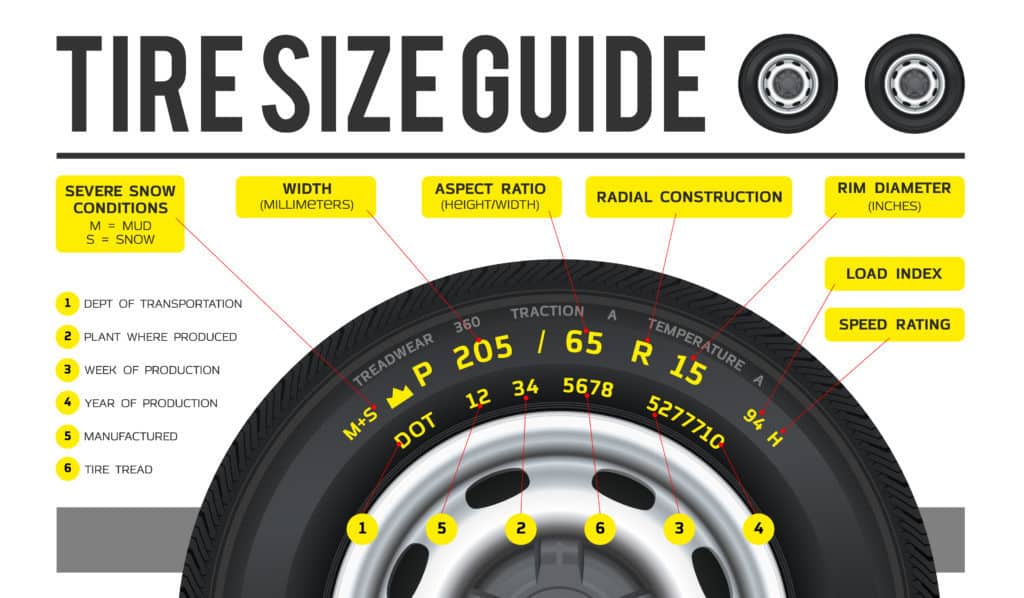
Have you ever wondered what the numbers on your car tires actually mean? This has got to be one of the most misunderstood part of a vehicle. Sometimes we just driver our card and never care to know what is on the tires.
I, however, have always been curious about these numbers, and I sought out to answer this question – what do the tire size numbers mean? I put this review together to help anyone who has ever wondered about this.
With a step to step explanation, I shall explain to you what I found out about the numbers and the letters. They are usually found on the sidewall of your tires. They indicate the type of tire, the size, and the performance of the tire.
Let’s get started;
Tire Type
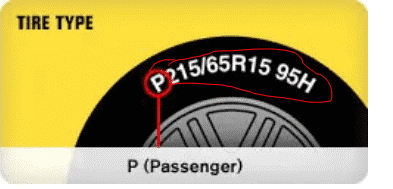
The first letter at the beginning of most tires represents the tire type. This particular tire with a P stands for the P – Metric tire and refers to the tiers that are made following certain standards in the US. It is intended for Passenger vehicles.
But, if your tire has no letter at the beginning, do not worry, this indicates that it is a Euro Metric tier. Both P-Metric, as well as the Euro Metric, are made of different vehicle capacities.
A tire that comes with “LT” at the end or beginning of the tire shows that it is designed for lighter trucks. Manufacturers of motor vehicles usually equip some light trucks with the letters LT. This shall also mean that you will need to put more pressure on inflation compares to the normal tires.
Here’s a video with all the information you need.
Tire Width
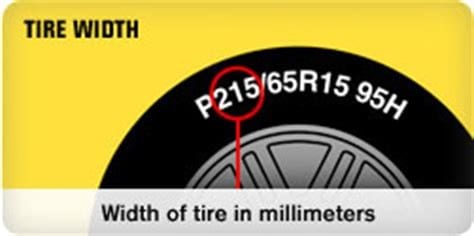
This is basically the number that tells you the width of the tires. This is usually measured in terms of millimeters and it usually a measurement from one side to the other. These first three letters will refer to the width of the tire. For example in the sample above, the tire width is 215.
Find out more here.
Aspect Ratio
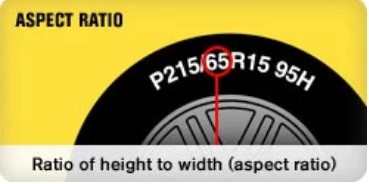
The aspect ratio refers to the height of the cross-section of the tire to its width. This is a two-digit number that is usually slashed after the width of the tire. For example, you can say that the size of the tire is P215/65, which means its width is 215 and has a 65 aspect ratio.
The 65 means that the tires aspect ratio is 65% of the width of the tire. Now, when you have a very big aspect ratio, it means that your sidewalls are very big as well.
Construction
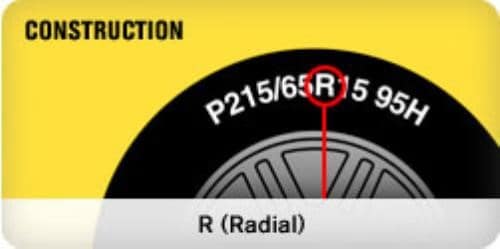
For the tire above, it is represented by the letter R. This means Radial and it means that the layers of the tire run radically across it.
Find out more here.
Wheel Diameter
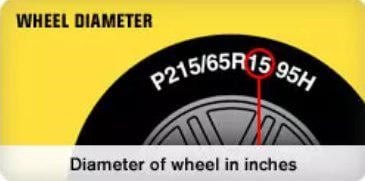
The wheel diameter is the measurement of the wheel from one side to the other. This is a measurement that helps you understand the wheel size that the tire shall fit. A tire with a width of 15 means that the tire should feet into a wheel of 15” in diameter.
This video tells you more about it.
Load Index and speed rating
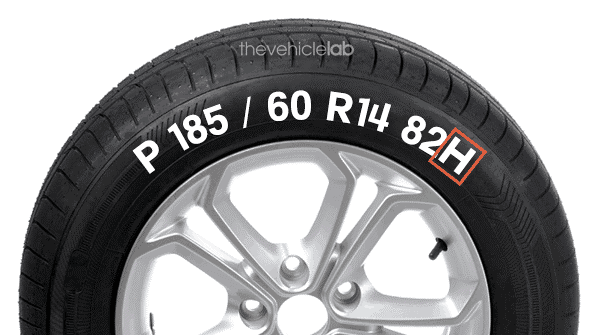
The main function of this measurement is to tell you the amount of load the tire is able to hold when it is at maximum inflation. This is available on the sidewall of the tire and it is available in both kilograms and pounds.
The speed rating on the other hand represents the maximum speed capacity for the tire. In most cases, the ratings are usually matched with the maximum capacity of the tire. So, for example, care with an H- speed rating, shall have a maximum speed capacity of around 130 mph, or 210 km/h.
Have a look at this video that explains how to understand the load index much better.
Traction grades
- AA
- A
- B
- C
These are the temperature grades and they are used to indicate the ability of your tire to withstand the heat that is destructive. A tire has the highest temperature grade and can be able to operate at very high speeds.
|
Temperature Grades |
The speed |
|
A |
More than 115 |
| B |
Can only manage between 100 and 115 |
|
C |
Can only manage between 85 and 100 |
Most manufacturers will base this on standardized government tests that can best help to predict the expected wear of the tire.
Additional Parameters
There are usually additional parameters for the bigger vehicles such as the 2 or 3 wheeled busses and agricultural vehicles. These ones usually indicate different purposes. For example, you may find the letters M/C on the tires which means motorcycles only.
So, a tire number like this one. P185 / 60 R14 M/C 82H, has all the parameters we have outlined above, but additionally, this is meant for a Motorcycle.
Other letters you may find would represent;
- The brand name of the tire
- The performance criteria for the tire
- The winter tire symbol
- The UTQG ratings.
- The Dot tire identification
- The Maximum inflation limit for cold.
Conclusion
I sure do hope that you can now accurately identify what each letter on your tire means, and that you are no longer curious and wondering what all the letters represent. Now, additionally, you must take good care of your tires by exercising the following safety precautions;
- Rotate them regularly – rotating the tires by putting the front in the back will ensure that the front tires do not wear out faster than those in the back, as the front ones are used mostly when you are turning.
- Constantly check on the pressure – every vehicle comes with specifications on the amount of pressure it should hold on each tire. This is usually based on the suspension, the weight, and the steering design. Always ensure that your tires have the right amount of pressure.
- Check on the treads of the tires – the treads are essential for ensuring that you maintain the right traction on the road, especially when its wet weather and the roads are slippery. With time, the treads of your tires will wear out, so keep checking on them.
- Align your wheels each year – when you hit potholes and bumps on the roads, the wheels usually get out of alignment. This is pretty common, and when they are not aligned, this reduces their lifespan. Make a point of aligning them each year.
Please feel free to contact us if you happen to have any other questions regarding your car’s wheels. We are here to help you with all of your problems. All the best and make sure you drive safe.
The post What Do Tire Size Numbers Mean? Understanding Your Tire Sizes appeared first on Smart Motorist.
source https://www.smartmotorist.com/how-to-read-tire-size
No comments:
Post a Comment